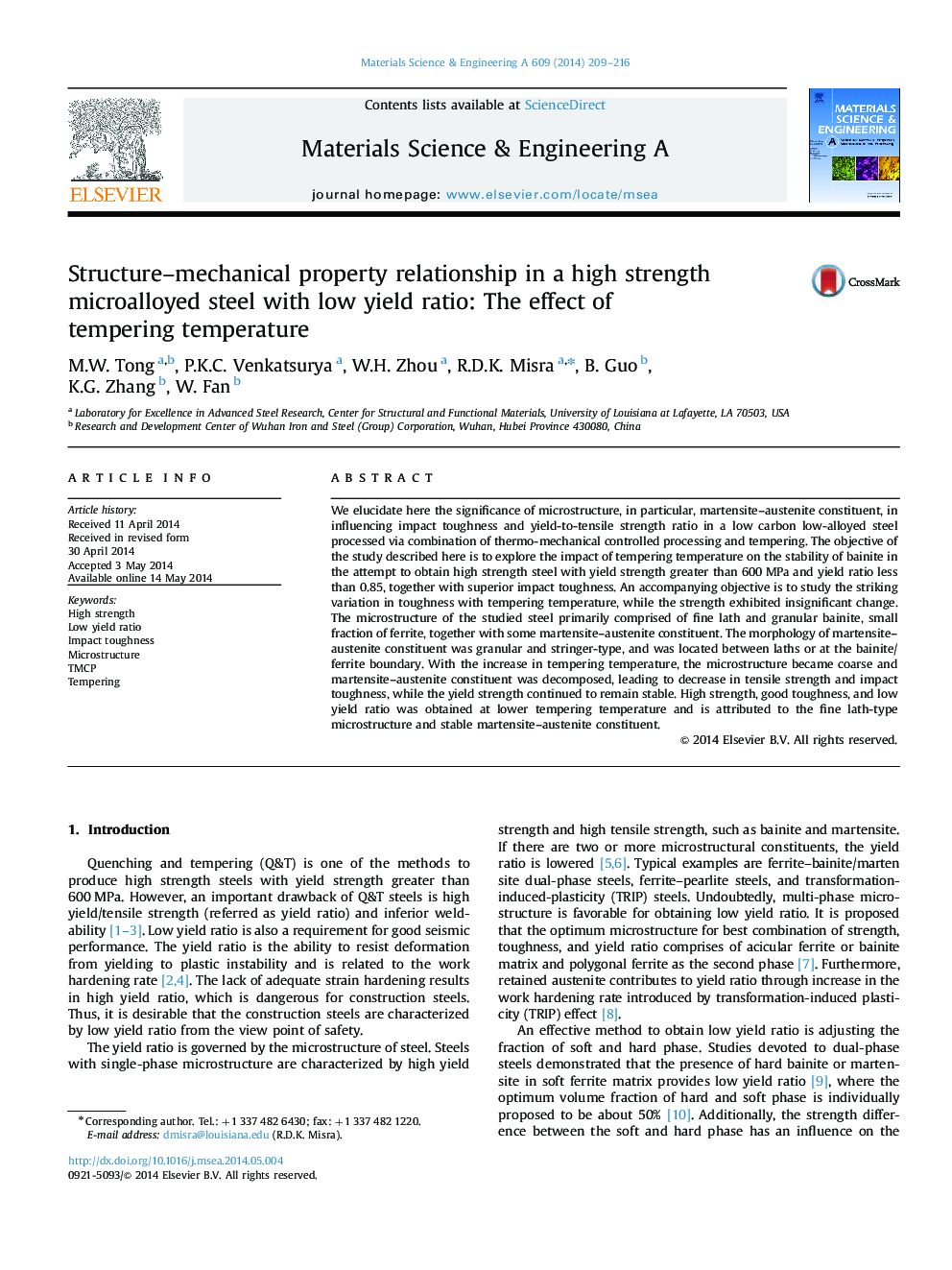| Article ID | Journal | Published Year | Pages | File Type |
|---|---|---|---|---|
| 1575152 | Materials Science and Engineering: A | 2014 | 8 Pages |
Abstract
We elucidate here the significance of microstructure, in particular, martensite-austenite constituent, in influencing impact toughness and yield-to-tensile strength ratio in a low carbon low-alloyed steel processed via combination of thermo-mechanical controlled processing and tempering. The objective of the study described here is to explore the impact of tempering temperature on the stability of bainite in the attempt to obtain high strength steel with yield strength greater than 600Â MPa and yield ratio less than 0.85, together with superior impact toughness. An accompanying objective is to study the striking variation in toughness with tempering temperature, while the strength exhibited insignificant change. The microstructure of the studied steel primarily comprised of fine lath and granular bainite, small fraction of ferrite, together with some martensite-austenite constituent. The morphology of martensite-austenite constituent was granular and stringer-type, and was located between laths or at the bainite/ferrite boundary. With the increase in tempering temperature, the microstructure became coarse and martensite-austenite constituent was decomposed, leading to decrease in tensile strength and impact toughness, while the yield strength continued to remain stable. High strength, good toughness, and low yield ratio was obtained at lower tempering temperature and is attributed to the fine lath-type microstructure and stable martensite-austenite constituent.
Related Topics
Physical Sciences and Engineering
Materials Science
Materials Science (General)
Authors
M.W. Tong, P.K.C. Venkatsurya, W.H. Zhou, R.D.K. Misra, B. Guo, K.G. Zhang, W. Fan,
